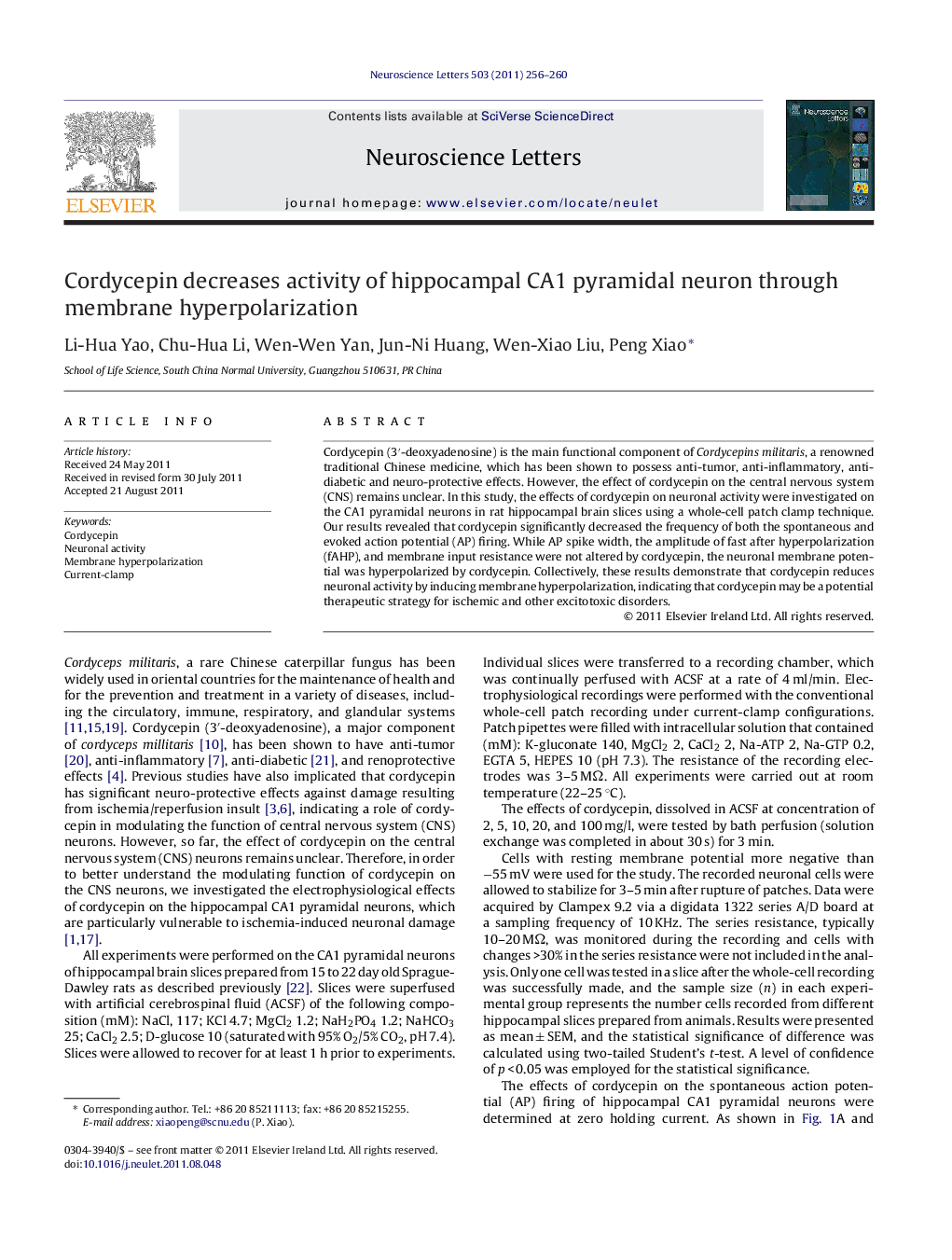| Article ID | Journal | Published Year | Pages | File Type |
|---|---|---|---|---|
| 4344909 | Neuroscience Letters | 2011 | 5 Pages |
Cordycepin (3′-deoxyadenosine) is the main functional component of Cordycepins militaris, a renowned traditional Chinese medicine, which has been shown to possess anti-tumor, anti-inflammatory, anti-diabetic and neuro-protective effects. However, the effect of cordycepin on the central nervous system (CNS) remains unclear. In this study, the effects of cordycepin on neuronal activity were investigated on the CA1 pyramidal neurons in rat hippocampal brain slices using a whole-cell patch clamp technique. Our results revealed that cordycepin significantly decreased the frequency of both the spontaneous and evoked action potential (AP) firing. While AP spike width, the amplitude of fast after hyperpolarization (fAHP), and membrane input resistance were not altered by cordycepin, the neuronal membrane potential was hyperpolarized by cordycepin. Collectively, these results demonstrate that cordycepin reduces neuronal activity by inducing membrane hyperpolarization, indicating that cordycepin may be a potential therapeutic strategy for ischemic and other excitotoxic disorders.
► The electrophysiological effect of cordycepin on the CNS neurons was investigated. ► Cordycepin decreased both the spontaneous and evoked AP firing frequency of hippocampal CA1 pyramidal neuron. ► Cordycepin induced membrane hyperpolarization cordycepin has no significant effects on AP spike width, fAHP amplitude, and membrane input resistance.
